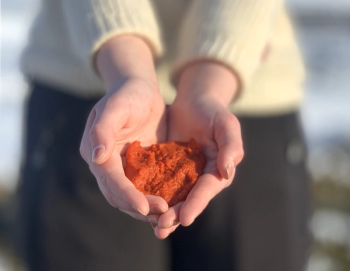
Best of 2012 Retail Product/Brand: Mars Incorporated
The company’s newly published method for analyzing flavanols and procyanidins in cocoa-based products may soon benefit the natural product industry, as well as consumers.
Working with nonprofit analytical methods expert AOAC International, Mars successfully completed a multi-laboratory validation of its method for analyzing flavanols and procyanidins in cocoa-based products. Twelve laboratories were able to reproduce the testing method and achieve consistent results. (A description of this effort was published in the July/August 2012 edition of the Journal of AOAC International, titled “Determination of flavanol and procyanidin (by degree of polymerization 1-10) content of chocolate, cocoa liquors, powders, and cocoa flavanol extracts by normal phase high performance liquid chromatography: Collaborative study.”)
The analysis method utilizes high-performance liquid chromatography (HPLC), along with fluorescent detection. Mars says the test can be used not only to test flavanol levels but also to compare levels across different products, using one established measurement.
“This validation represents a critical breakthrough. For the first time, there’s a way to make consistent and informative comparisons of the flavanol levels in different cocoa and chocolate products. The fact that this testing method has been proven to be reliable and transferable opens the door for it to be used on a much wider scale,” says Dr. Catherine Kwik-Uribe, R&D director, Mars Botanical.
Flavanols, abundant in cocoa, are a group of phytonutrients within the flavonoids family. Cocoa flavanols have been shown to provide a range of benefits to support the circulatory system and have been positively linked to heart, brain, and skin health. Kwik-Uribe says that over the years, various labs and manufacturers have used a variety of methods to test flavanol levels. In many cases, these methods have not been specifically related to cocoa flavanols and have yielded varying results. “With a validated-and now officially recognized-method, the industry for the first time has the opportunity to align behind a common approach to cocoa flavanol analysis. This could lead to more-uniform numbers on product labels that will help consumers compare and contrast flavanol-containing products, help scientists conduct needed research to advance the field, and help regulators evaluate claims,” she explains.
The first step toward that goal happened last month, when AOAC certified Mars’s method as an Official Method of Analysis (OMA), First Action. The OMA program is internationally known for its rigorous scientific and systematic scrutiny of methods. The next step is to get other manufacturers of cocoa products on board with using the method, but Kwik-Uribe doesn’t see that as being an issue. “The compelling science surrounding the benefits of flavanols is continuing to emerge and is showing great promise for health. Using this analytical method will help manufacturers clearly and consistently label cocoa flavanol levels on their packaging and may also encourage the development of new products with higher flavanol levels.”
This validated test method could also help others establish similar analysis methods for flavanols in food beyond cocoa. Better analysis methods also lead to improved tools for nutrition research. “We have a dozen clinical trials underway now, globally, studying the effects of cocoa flavanols on human health,” Kwik-Uribe adds.
Mars has researched cocoa flavanols for 20 years. The company started out looking at how cocoa is grown to determine factors in growing, harvesting, and processing that most affect flavanol levels. “We used this knowledge to develop the processing methods that would best preserve the naturally occurring flavanols in cocoa,” explains Kwik-Uribe. “In recent years, we have even begun to look at the influence of cocoa genetics on flavanols, and what is emerging is a more complete picture of cocoa flavanols from farm-or seed-to finished product.”
“We hope our work will lead to better information for consumers-and, ultimately, advance cocoa flavanol research even more,” says Kwik-Uribe. “Maybe there will even be dietary requirements for flavanols one day,” she adds.
Newsletter
From ingredient science to consumer trends, get the intel you need to stay competitive in the nutrition space—subscribe now to Nutritional Outlook.





